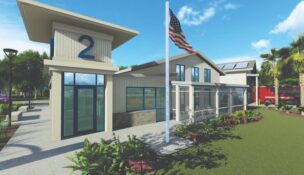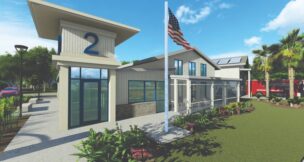Resilient retail real estate market has undergone statewide changes
Christina Lee Knauss //July 19, 2022//
Resilient retail real estate market has undergone statewide changes
Christina Lee Knauss //July 19, 2022//
Rising inflation might be battering both the wallets and the attitudes of many consumers, but so far the upward surge in prices for food, gas and everything else has not put a damper on the retail real estate market in South Carolina, according to data from Colliers South Carolina.
Colliers’ recent report on the state’s retail market during the first quarter of this year indicates retail space continues to be in high demand around the state, fueled largely by an ongoing population increase in many regions. To put it simply, more people moving in means a higher demand for goods and services, which is translating into a higher need for everything from grocery stores to restaurants.
The Colliers report drew on data from the South Carolina Department of Revenue and South Carolina Department of Commerce to study retail trends.
According to the report, new housing permits rose 27% from February to March across the state, indicating a continued influx of new residents. In addition, South Carolina’s retail sales increased by 29% in February compared to February of 2019, and 28% above February 2021. The overall retail vacancy rate, meanwhile, decreased from 5.64% to 3.25% year-over-year, and is expected to continue to decline as vacant space is absorbed to accommodate pent-up demand for retail properties.
One of the hottest areas for new retail in Columbia is Forest Acres, where available retail space is at a premium. Other growing areas include Harbison, the Clemson Road and Killian Road corridors in northeast Richland, and the areas around U.S. Highway 378 and S.C. 6 in Lexington.
“We’re seeing an overall strong demand for retail brick and mortar space across the board, whether it’s necessity retail like grocery stores or dollar-type stores that sell things people have to have, food and beverage, or specialty service retail,” said Rox Pollard, Colliers’ vice president of retail services in South Carolina.
Pollard said the sheer variety of specialty service retailers coming online around the state is “amazing” and likely fueled by a rising demand for new and different services as people continue to get back to more normal lives after two years of the pandemic.
“Recently the services we’ve done include not only things like hair and nail salons, but specialized things like cryotherapy,” Pollard said. “We’re seeing a lot of specialty fitness services like Pilates and cycling.”
Food and beverage services, especially those that specialize in one particular product, are among the hottest new tenants of retail space around the state, including in the Midlands. Vacancy for restaurant and food service retail in Columbia has steadily decreased during the past year from 5.66% to 3.17%.
Pollard said specialty bakeries such as Nothing Bundt Cakes and Crumbl Cookies are examples of the kind of food businesses doing well with customers seeking more of a niche food experience.
Nothing Bundt Cakes currently has two locations in Columbia, one in Forest Acres and another near the Village at Sandhills. Crumbl Cookies currently has a site in Lexington and will soon be opening another in Forest Acres in the new Cardinal Crossing complex.
Although restaurants have been struggling with staffing shortages and supply chain issues, that hasn’t put a damper on restaurant retail development either, reports show.
When it comes to restaurants, small and fast are the words to live by right now, both statewide and in the Columbia area. According to Colliers, more efficient restaurants in smaller spaces are leading the pack when it comes to new restaurant retail development in the capital city, with quick service and fast casual concepts growing in popularity among consumers.
New offerings in Columbia embrace a wide variety of cuisines and cooking styles, but all focus on speed and efficiency. The Colliers report indicates this trend is coming from a greater focus on drive-through service and lingering lower demand for indoor dining.
During the first quarter, several restaurants under 5,000 square feet completed new deals in Columbia, including El Charro, Don Camaron, Griffin Chophouse, Jay’s Bar and Grill and Mai Poke.
“Smaller footprints are driving new restaurants because a lot more people are interested in using drive-throughs or click-and-collect services where you go in and take your order off a shelf,” Pollard said. “There’s a rapid shift where some restaurants are using double and even triple drive-throughs, so that enables the buildings to be smaller because not as many people are using the dining rooms.”
Smaller also is a watchword with other types of retailers, with fewer national chain grocers, discount retailers and other stores going for the “Big Box” experience that was all the rage during the ‘90s and 2000s, Pollard said. He used the example of Best Buy, which has recently decreased the footprint of many of its stores from a Big Box to the 25,000-square-foot range.
While retail stores and restaurants might be a little smaller in the future, what isn’t likely to change is an increase in people using them, Pollard said. Shopping and grabbing a bite to eat on the go is one way of battling the isolation so many people have experienced in recent years.
“Many people had been predicting the end of retailing as we know it prior to and during the pandemic, but many of the overlooked the important socialization aspect that comes just through shopping or going to a restaurant to pick up a meal,” Pollard said.
P
















